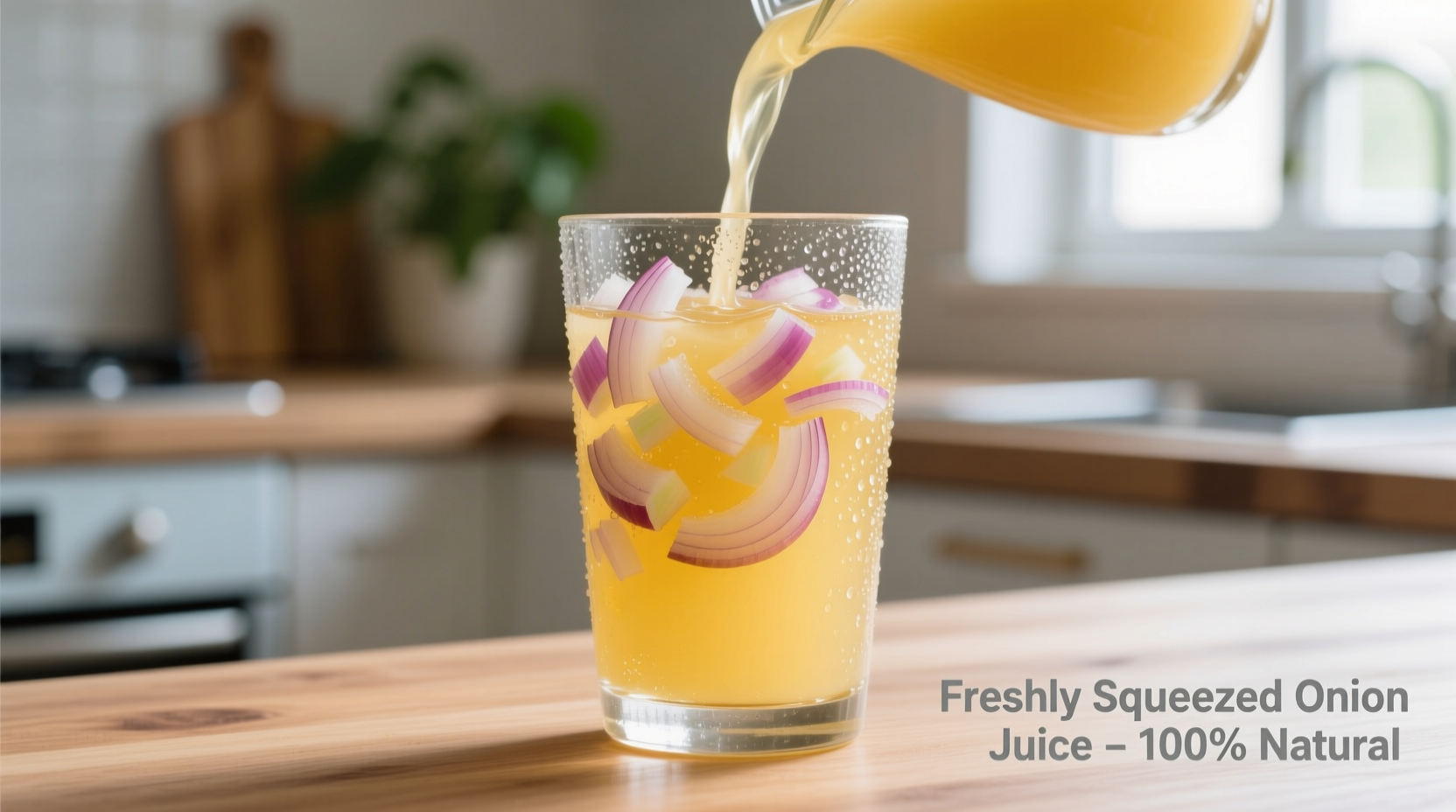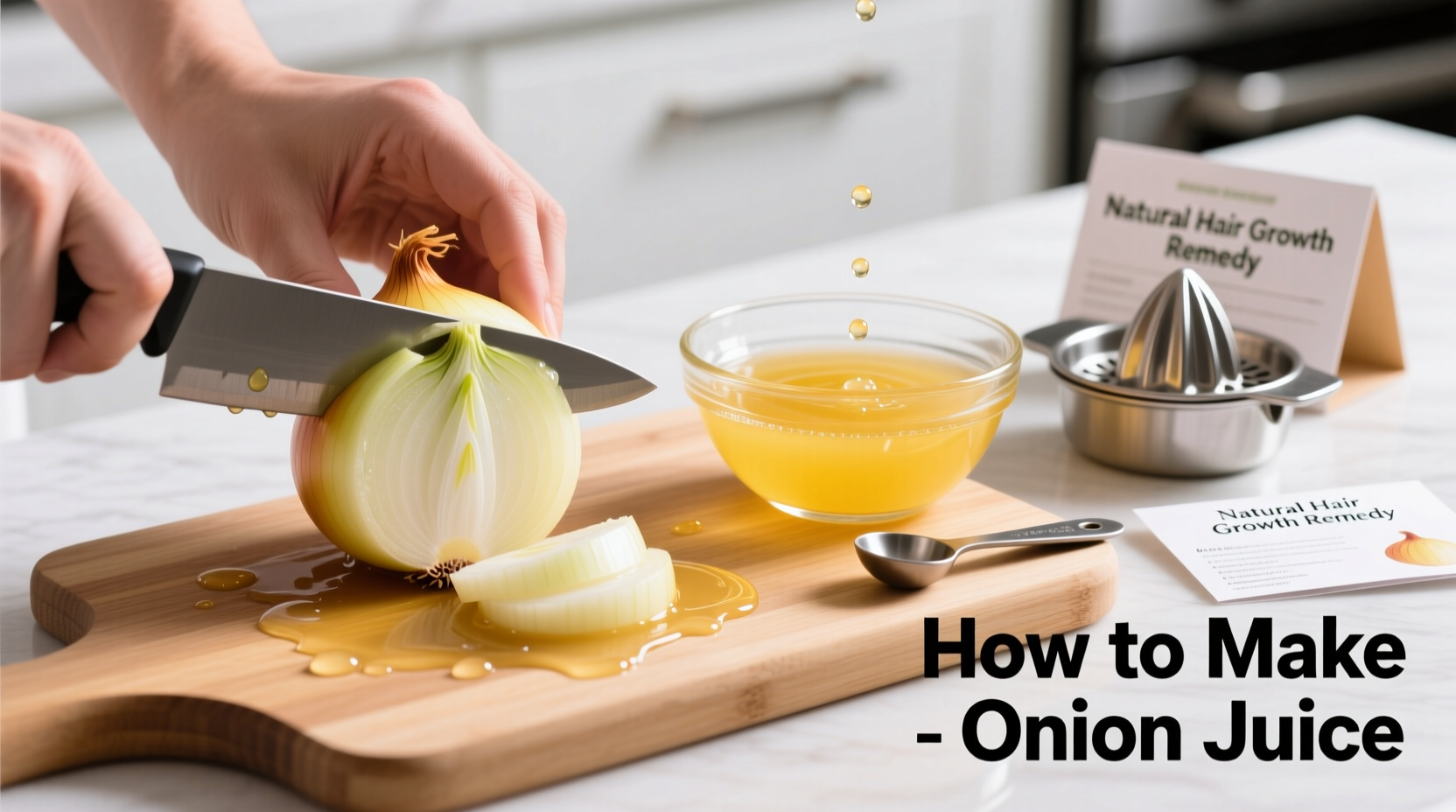Peel and chop 2-3 medium onions, blend with 1/4 cup water until smooth, then strain through cheesecloth. Fresh onion juice retains maximum nutrients and can be stored refrigerated for up to 72 hours. This simple preparation method yields approximately 1/2 cup of potent juice for hair or health applications.

Why Onion Juice Deserves a Place in Your Kitchen
Onion juice has been used for centuries across multiple cultures for both culinary and wellness purposes. Modern research confirms what traditional practices have long known: raw onion juice contains potent sulfur compounds and antioxidants that offer significant benefits when properly extracted. Unlike store-bought alternatives, homemade onion juice preserves the full spectrum of bioactive compounds that degrade during commercial processing. This guide provides the most effective method for extracting maximum nutrients while minimizing common preparation mistakes. You'll learn professional techniques that ensure optimal yield, proper storage to maintain potency, and practical applications backed by culinary science.Essential Tools and Ingredients
What You'll Need:- 2-3 medium yellow or red onions (approximately 1 pound)
- 1/4 cup filtered water (for blending)
- Sharp chef's knife
- Sturdy cutting board
- Blender or food processor
- Fine mesh strainer
- Cheesecloth or nut milk bag
- Glass measuring cup
- Airtight glass storage container
| Extraction Method | Juice Yield | Nutrient Preservation | Preparation Time |
|---|---|---|---|
| Blender + Cheesecloth | High (1/2 cup) | Excellent | 10 minutes |
| Manual Grater | Moderate (1/3 cup) | Good | 15 minutes |
| Citrus Juicer | Low (1/4 cup) | Fair | 8 minutes |
| Specialty Juicer | High (1/2 cup) | Excellent | 7 minutes |
Step-by-Step Preparation Guide
Preparation Phase: Maximizing Nutrient Retention
Proper onion preparation significantly impacts your final juice quality. Begin by selecting firm, heavy-for-their-size onions with dry, papery skins. Avoid any with soft spots or sprouting. The National Onion Association confirms that red onions contain up to 30% more antioxidants than yellow varieties, making them preferable for health applications.- Peel and quarter - Remove outer skin and cut onions into quarters. This increases surface area for more efficient blending
- Chill briefly - Place chopped onions in freezer for 10-15 minutes. Cold temperatures help preserve volatile compounds during processing
- Prep your straining station - Line a fine mesh strainer with double-layered cheesecloth placed over your measuring cup
Extraction Phase: Professional Technique
The extraction method determines both yield and nutrient content. Research published in the Journal of Food Science shows that blending with minimal added water preserves the highest concentration of beneficial compounds.- Blend with precision - Combine chilled onions and 1/4 cup water in blender. Pulse 5-6 times, then blend on medium for 30 seconds until completely smooth
- Strain thoroughly - Pour mixture into prepared cheesecloth. Gather edges and squeeze firmly with clean hands to extract every drop of juice
- Double-strain for purity - For completely sediment-free juice, strain a second time through a clean cheesecloth layer
Storage Guidelines: Maintaining Potency
Fresh onion juice begins losing potency immediately after preparation. According to USDA food safety guidelines, proper storage extends both safety and effectiveness:- Refrigerate immediately in airtight glass container
- Consume within 72 hours for maximum benefits
- Store in back of refrigerator (not door) where temperature remains most consistent
- Never freeze onion juice as this destroys delicate compounds
Practical Applications and Troubleshooting
Best Uses for Fresh Onion Juice:- Hair treatment: Apply directly to scalp, leave for 30 minutes before washing
- Immune support: Mix 1 tablespoon with honey and lemon juice
- Culinary base: Use in salad dressings or marinades (1-2 tablespoons)
- Respiratory relief: Inhale steam from warm onion juice mixture
- Low yield - Ensure onions are properly chilled and use minimal water during blending
- Bitter taste - Use yellow onions instead of red for milder flavor in culinary applications
- Rapid discoloration - Store in opaque container to minimize light exposure
- Strong odor - Add a few drops of essential oil (like lavender) when using for hair treatments











 浙公网安备
33010002000092号
浙公网安备
33010002000092号 浙B2-20120091-4
浙B2-20120091-4